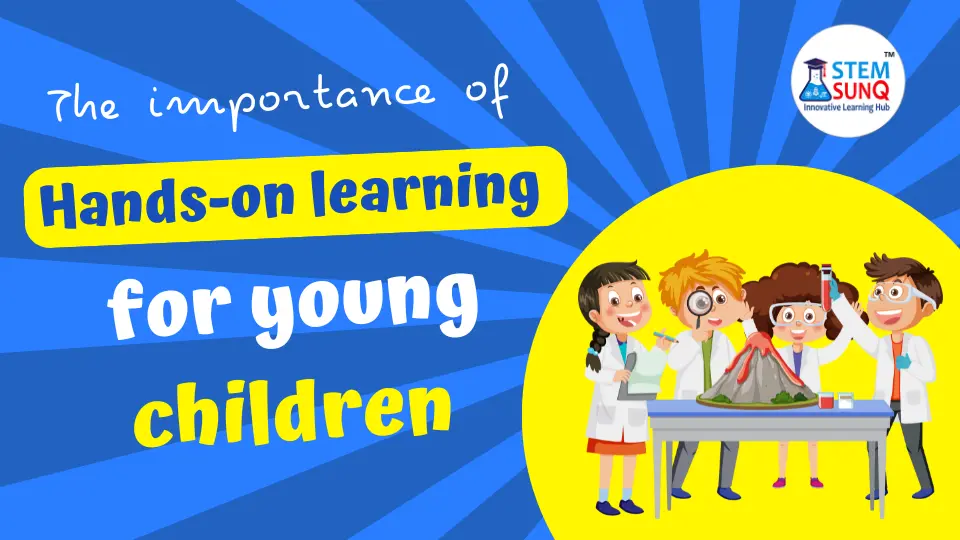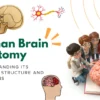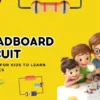
Table of Contents
In the fast-paced world of today, finding efficient ways to engage young children in learning is more important than ever.
Traditional methods frequently fail to capture and excite their natural curiosity. Enter into the importance of hands-on learning for young children, a dynamic strategy that not only sparks the interest of young brains but also develops critical skills for future success.
In this blog post, we will look at why hands-on learning is important for young children and how it can improve their educational experience.
Also explore: 10+ hands-on activities in STEM Kit for your young children
What is Hands-On Learning?
Hands-on learning, commonly referred to as experiential learning, involves children in activities that require active participation.
This approach increases children’s exploration, experimentation, and discovery through direct connection with materials and their surroundings.
Hands-on learning, as compared to passive learning, which requires children to listen or observe, places them at the center of their education.
Why the Importance of Hands-on Learning for Young Children
Enhances Engagement
Children are inherently curious, and they learn best when they are engaged in what they are doing.
Hands-on activities are naturally engaging since they are interactive and enjoyable. When children are actively immersed in an activity, they are more likely to remain focused and excited, resulting in a positive learning experience.
Builds Critical Thinking Skills
Hands-on learning for young children helps kids think critically and solve challenges. For example, when building a tower with blocks, children must figure out how to balance the blocks so that the tower does not collapse.
This approach helps students learn essential skills like reasoning, decision-making, and troubleshooting.
Encourage Creativity and Innovation
When children have the opportunity to explore and experiment, their creativity expands. Hands-on activities allow children to express their thoughts and develop unique solutions.
Whether they’re painting, creating, or conducting small science experiments, the creative process helps them develop their brain power and stimulates unconventional thinking.
Supports Social and Emotional Development
Many hands-on learning activities require collaboration and teamwork. Children learn to communicate, share, and collaborate around a common purpose.
These interactions promote the development of social skills such as understanding and collaboration, as well as mental skills like patience and resilience.
Working in groups helps children learn to resolve problems and celebrate victories together.
Strengthens Fine Motor Skills
Hands-on learning frequently includes activities requiring precise motions, such as cutting, sketching, or assembling.
These activities help to improve fine motor skills and hand-eye coordination, which are essential for daily tasks like writing, dressing, and eating.
Practical Ways to Implement Hands-On Learning
At Home
- Cooking and Baking: Involve your child in cooking or baking. Measuring, mixing, and decorating are great ways to teach math, science, and creativity.
- Gardening: Planting seeds, watering plants, and seeing them grow educate children about biology, responsibility, and environmental awareness.
- Arts and Crafts: Encourage your child to create art projects with a variety of materials. This not only boosts their creativity but also improves their fine motor skills.
- Building Projects: Build constructions out of blocks, Legos, or household materials. This can teach fundamental engineering ideas and problem-solving skills.
- DIY Science Kits: Use household items to make easy science kits. Create a lava lamp with oil, water, and food coloring, or explore density with a layered liquid experiment.
- Interactive Storytime: Make storytime more participatory by adding props or acting out scenes from the story. This can aid with comprehension and make reading more interesting.
- Nature Walks: Take your youngster for nature walks and encourage them to collect leaves, rocks, and flowers. Discuss their findings and apply them to fundamental scientific principles.
In the Classroom
- Science Experiments: Simple experiments can concretely show scientific principles. For example, combining vinegar and baking soda to make a volcano illustrates chemical reactions.
- Math Games: Use beads or counters to teach counting, addition, and subtraction. Making math into a game makes it more interesting.
- Role-Playing: Create scenarios in which children can play different roles. This improves social skills and allows for a better understanding of diverse perspectives.
- Field Trips: Visits to museums, farms, and wildlife reserves give hands-on experiences that supplement classroom learning.
- Engineering Challenges: Create challenges such as building the tallest structure or creating a bridge that can support a given weight. These activities promote teamwork and problem-solving.
- Interactive Learning Stations: Create different learning stations with a variety of hands-on activities. Rotate groups of youngsters through the stations to keep them interested and busy.
- Collaborative Art Projects: Encourage kids to collaborate on larger creative projects. This encourages teamwork and allows children to express their creativity together.
Conclusion
Now you know that the importance of Hands-on learning for young children is a strong tool that can improve young children’s educational experiences. Making learning interactive, engaging, and enjoyable improves critical thinking, creativity, social skills, and fine motor skills.
Whether at home or in the classroom, adding hands-on activities into your child’s daily routine will help them reach their full potential and provide the groundwork for lifetime learning.
Accept the power of hands-on learning for young children and witness how it transforms your child’s path of discovery and growth.






